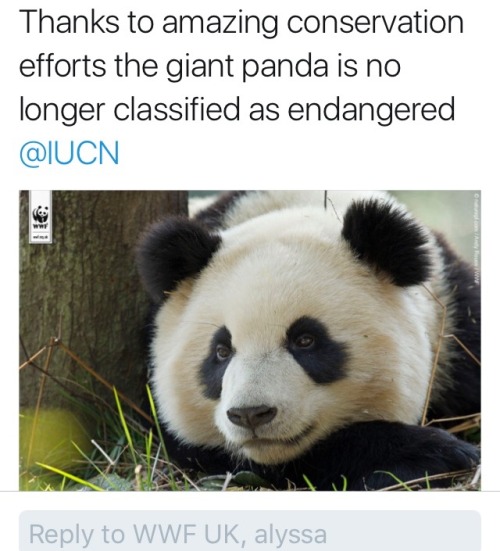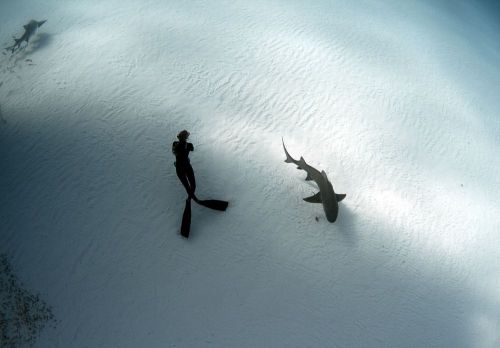The Only Good News To Come Out Of 2016

the only good news to come out of 2016
More Posts from Llamaslikesciencetoo and Others



Video: Ocean Ramsey Swims With A Whale Shark
See The Amazing Video Here!!
In this short video, augmented reality startup company Magic Leap used their cool technology to make 3D magic happen in a school gym.

A starfish walking back to the water.



A study of Saurian morphology: Pseudosuchia (part 2)
Look at that. It’s a croc. With flippers. Yes it did actually exist.
Note to self: learn to schedule these things better. Coming back home after a long day of work to find out I had to do something with a ton of scales is NOT. AT. ALL. FUN. I’ll have to fix dem legs one day but right now I just can’t be bothered.
Edit: oh hey that sucker doesn’t look as bad as I originally had in mind.
- - -
Will Art for Science · Find me elsewhere


The Mud Dragons of Calvert Island, BC
Shedding light on these mysterious marine creatures.
by Josh Silberg
Spiky headed dragons roam the ocean floor from the poles to the tropics. But these are not winged beasts from the pages of science fiction. These strange creatures are Kinorynchs, aka “mud dragons“, and they are very real.
Roughly the size of a grain of salt, mud dragons are often overlooked, but a team from the Hakai Institute and the University of British Columbia (UBC) hopes to give them the spotlight they deserve.
“Canada has very few reports on these animals. The first step is to know what is there,” says Dr. Maria Herranz, a Hakai post-doctoral scholar and resident mud dragon expert at UBC…
(read more and see video: Hakai)
images by Marria Harranz

New Species of Shieldtail Snake Discovered in India
by Enrico de Lazaro
The Khaire’s black shieldtail (Melanophidium khairei) is described in a paper recently published in the journal Zootaxa by an international team of scientists led by Dr. David Gower of the Natural History Museum, London, UK. The newfound species occurs in southern Maharashtra, Goa, and northern Karnataka. It is the most northerly member of the genus…
(read more: Science News)
photographvia: David J. Gauer et al.

Mildred Dresselhaus, a professor emerita at the Massachusetts Institute of Technology whose research into the fundamental properties of carbon helped transform it into the superstar of modern materials science and the nanotechnology industry, died on Monday in Cambridge, Mass. She was 86.
Her death, at Mount Auburn Hospital, was confirmed by her granddaughter Leora Cooper. No cause was given.
Nicknamed the Queen of Carbon in scientific circles, Dr. Dresselhaus was renowned for her efforts to promote the cause of women in science. She was the first woman to secure a full professorship at M.I.T., in 1968, and she worked vigorously to ensure that she would not be the last.
In 1971, she and a colleague organized the first Women’s Forum at M.I.T. to explore the roles of women in science. Two years later she won a Carnegie Foundation grant to further that cause.
“I met Millie on my interview for a faculty job in 1984,” said Lorna Gibson, now a professor of materials science and engineering. “M.I.T. was quite intimidating then for a new female, but Millie made it all seem possible, even effortless. I knew it wouldn’t be, but she was such an approachable intellectual powerhouse, she made it seem that way.”
[…]
Dr. Dresselhaus used resonant magnetic fields and lasers to map out the electronic energy structure of carbon. She investigated the traits that emerge when carbon is interwoven with other materials: Stitch in some alkali metals, for example, and carbon can become a superconductor, in which an electric current meets virtually no resistance.
Dr. Dresselhaus was a pioneer in research on fullerenes, also called buckyballs: soccer-ball-shaped cages of carbon atoms that can be used as drug delivery devices, lubricants, filters and catalysts.
She conceived the idea of rolling a single-layer sheet of carbon atoms into a hollow tube, a notion eventually realized as the nanotube — a versatile structure with the strength of steel but just one ten-thousandth the width of a human hair.
She worked on carbon ribbons, semiconductors, nonplanar monolayers of molybdenum sulfide, and the scattering and vibrational effects of tiny particles introduced into ultrathin wires.
She published more than 1,700 scientific papers, co-wrote eight books and gathered a stack of accolades as fat as a nanotube is fine.
Dr. Dresselhaus was awarded the National Medal of Science, the Presidential Medal of Freedom (bestowed by President Barack Obama), the Kavli Prize in Nanoscience, the Enrico Fermi prize and dozens of honorary doctorates. She also served as president of the American Physical Society and the American Association for the Advancement of Science and worked in the Department of Energy in the Clinton administration.
Continue Reading.
Observation of the Week, 3/9/16

This Zombie Ant Fungus seen by jonathan_kolby in Cusuco National Park, Honduras is our Observation of the Week.
“I was walking down the trail, in pursuit of a frog, when this alien-like creature suddenly grabbed my attention out of the corner of my eye,” says National Geographic Explorer Jonathan Kolby. “This was the first time I had ever seen cordyceps fungus and didn’t know what it was at the time.” What he photographed (identified by Prof. David Hughes of Penn State), is likely the incredible fungus known as the Zombie Ant Fungus, which parasitizes its insect host and basically controls its brain. The host is often compelled to climb up the stem of a plant and uses its mandibles to latch onto it (known as the “death grip”). Fruiting bodies of the fungus eventually grow out of the host and release spores back into the forest. “After seeing this in person, I don’t think anyone would argue that nature is more amazing than the best sci-fi movie,” he says. “I now keep my eyes peeled every time I return to the forest to see if I can find another zombie insect! Just a few weeks ago, I found another one, this time of a moth (see below).”

(By the way, the BBC has incredible footage of an ant afflicted by Zombie Ant Fungus, you should definitely check it out.)
It is, however, another fungus which brings Jonathan to the rainforests of Honduras - Batrachochytrium dendrobatidis, commonly known as chytrid. It and the newly discovered B. salamandrivorans cause the disease chytridiomycosis, which is devastating amphibian populations around the world. The fungus does its damage by affecting the keratin-producing layer of skin in amphibians, disrupting electrolyte balance and chemical flow, “and ultimately kills the amphibian by causing a little froggy heart attack,” says Jonathan. For the past 10 years, Jonathan has specifically been working to combat the global amphibian extinction crisis and recently established the Honduras Amphibian Research & Conservation Center (http://www.FrogRescue.com), where they are working to protect three endangered species of frogs from chytrid. He’ll be finishing up his PhD at James Cook University in Australia and “now wants to help develop policies to protect biodiversity from emerging infectious diseases, reduce the spread of invasive species, and combat the illegal wildlife trade.”
Believing that photography and social media are important for raising awareness about these issues, Jonathan is active on many social media outlets (see below) one of which is iNaturalist. In addition to adding his own observations, he created an iNaturalist Project called Saving Salamanders with Citizen Science, where he’s asking folks to upload any photos they have of dead salamanders. “A new chytrid fungus disease [B. salamandrivorans] is beginning to spread around the world killing salamanders and we’re having a hard time tracking where it’s going,” he says. “With so many people outside looking at nature, anyone who snaps a picture of a dead salamander can provide valuable scientific data that might help us pinpoint where an outbreak is happening, so we can respond as quickly and efficiently as possible.” He invites anyone who’s interested in the issue to join, as he’ll be providing updates via the project; “iNaturalist has provided me with a way to communicate this message and raise awareness with a large audience of people who want to help protect nature.”
- by Tony Iwane
- You can follow Jonathan on Tumblr, Twitter, and Instagram, and check out his photos on SmugMug. Proceeds from SmugMug sales go to supporting his frog rescue operation at the Honduras Amphibian Rescue and Conservation Center.
- Here are links to two other cordyceps observations Jonathan has uploaded.
- Cordyceps fungus have even inspired video games! The acclaimed survival horror video game The Last of Us posits a world where a mutant strain of cordyceps affects humans, turning them into cannibalistic monsters.



Meet the orchid mantis.
Orchid mantises—particularly juveniles—seem aptly named. They’re predominantly white with pink or yellow accents, similar to some orchids and other flowers, and their four hind legs are lobed, like petals. But if you search for an exact floral counterpart, as behavioral ecologist James O’Hanlon did, you probably won’t find one. “I spent forever looking for a flower that they look just like,” he says, to no avail.
As it turns out, rather than mimicking one floral species, the insect instead may embody a “generic or an average type of flower” in order to attract bees and other pollinating insects as prey.
What’s more, as far as O’Hanlon can tell, it’s the only animal on record that “takes on the guise of a whole flower blossom” as a predatory strategy.
Learn more here.

-
 daengeli liked this · 4 months ago
daengeli liked this · 4 months ago -
 annita89e5qypoh liked this · 6 months ago
annita89e5qypoh liked this · 6 months ago -
 theuntalentedcitrus liked this · 8 months ago
theuntalentedcitrus liked this · 8 months ago -
 dragonflysrevenge liked this · 11 months ago
dragonflysrevenge liked this · 11 months ago -
 whatpandorasaw liked this · 11 months ago
whatpandorasaw liked this · 11 months ago -
 rakinino liked this · 11 months ago
rakinino liked this · 11 months ago -
 thebestinthewestandtheeast liked this · 11 months ago
thebestinthewestandtheeast liked this · 11 months ago -
 f-a-n-ii liked this · 11 months ago
f-a-n-ii liked this · 11 months ago -
 peaceandbeauty liked this · 11 months ago
peaceandbeauty liked this · 11 months ago -
 johnnyslittleanimalblog liked this · 11 months ago
johnnyslittleanimalblog liked this · 11 months ago -
 sophietor liked this · 11 months ago
sophietor liked this · 11 months ago -
 jakespaar liked this · 11 months ago
jakespaar liked this · 11 months ago -
 bloodandglittertastessobitter liked this · 11 months ago
bloodandglittertastessobitter liked this · 11 months ago -
 ursineenrichment reblogged this · 1 year ago
ursineenrichment reblogged this · 1 year ago -
 wonderer125blog liked this · 1 year ago
wonderer125blog liked this · 1 year ago -
 elcialingkab liked this · 1 year ago
elcialingkab liked this · 1 year ago -
 new-wave-girl liked this · 1 year ago
new-wave-girl liked this · 1 year ago -
 thepinkpanther83 liked this · 2 years ago
thepinkpanther83 liked this · 2 years ago -
 bellamy-blakesgirl liked this · 2 years ago
bellamy-blakesgirl liked this · 2 years ago -
 justremainingmyself liked this · 2 years ago
justremainingmyself liked this · 2 years ago -
 eleenth liked this · 2 years ago
eleenth liked this · 2 years ago -
 castlesinthesky2 liked this · 2 years ago
castlesinthesky2 liked this · 2 years ago -
 space-ace-123 liked this · 2 years ago
space-ace-123 liked this · 2 years ago -
 anatomyboxaccount liked this · 2 years ago
anatomyboxaccount liked this · 2 years ago -
 waywardcollectionprincess liked this · 2 years ago
waywardcollectionprincess liked this · 2 years ago
Mainly interested in ecology, but also the entirety of science.
179 posts